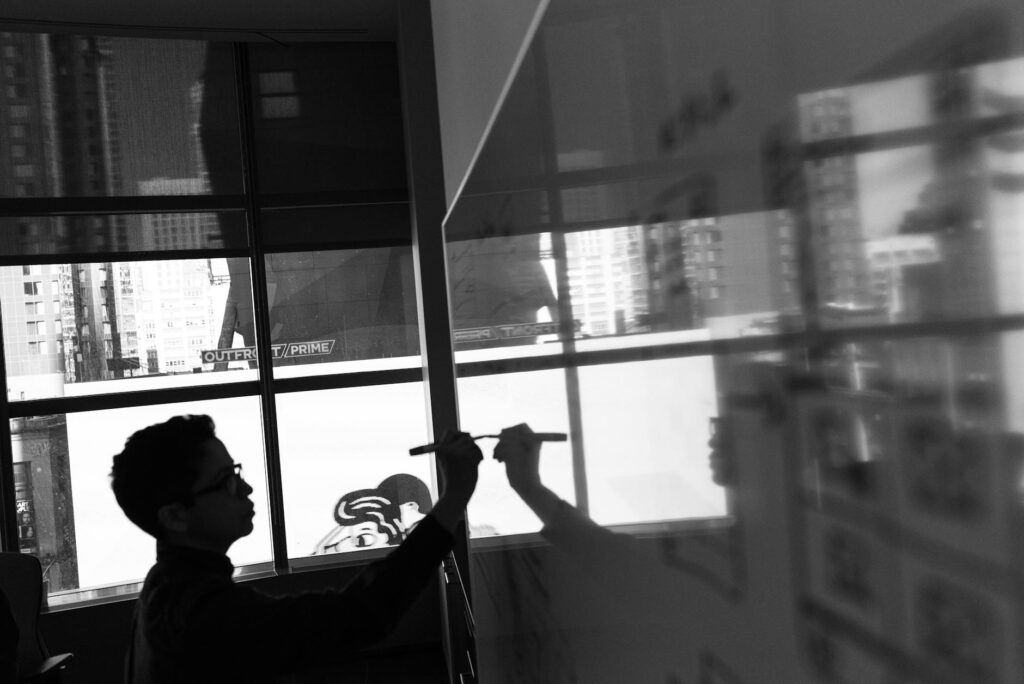What is visual task boards?

What is visual task boards?
Visual task boards have become a vital tool for individuals and teams aiming to enhance productivity and streamline project management. By transforming tedious task lists into visual representations, these boards not only make tracking progress easier but also foster collaboration and engagement among team members. If you’re looking to improve your time management skills and work-life balance, understanding visual task boards can be immensely beneficial.
Understanding Visual Task Boards
Visual task boards are graphical tools that help people manage tasks, projects, and workflows more effectively. They provide a clear view of what needs to be done, who is responsible, and what the priorities are.
Definition of Visual Task Boards
At their core, visual task boards are dynamic platforms that display tasks in a visual format, often using columns and cards. Tasks typically move through stages that represent different phases of completion. Whether it’s a simple sticky note system or a sophisticated digital interface, the concept remains the same: clarity in organization leads to improved productivity.
How Visual Task Boards Work
Visual task boards work by breaking down tasks into manageable parts, enabling users to see the status of each task at a glance. Tasks are represented as cards, which can be moved across columns that signify their progress, such as ‘To Do,’ ‘In Progress,’ and ‘Done.’ This movement not only enhances visibility but also provides a sense of accomplishment as tasks move toward completion.

Photo by Christina Morillo
Benefits of Using Visual Task Boards
The advantages of utilizing visual task boards extend beyond mere organization. They can transform your approach to work, making it more efficient and enjoyable.
Improved Clarity and Focus
One of the greatest benefits of visual task boards is the clarity they offer. With everything laid out visually, you can quickly identify upcoming tasks and priorities. This clarity helps maintain focus on what truly matters, reducing the likelihood of becoming overwhelmed by competing responsibilities.
Enhanced Collaboration
Visual task boards facilitate better teamwork. When everyone can see what tasks are active, who is responsible for each task, and how the project is progressing, communication flows more freely. Team members can discuss their progress, address roadblocks, and support each other more effectively. This collaborative spirit often leads to increased creativity and problem-solving.
Increased Accountability
When tasks are visible on a board, it becomes easier to track who is responsible for what. This visibility promotes accountability, as team members know their progress is being observed. Moreover, it encourages individuals to take ownership of their responsibilities, leading to higher engagement and productivity.
Types of Visual Task Boards
Various types of visual task boards cater to different needs and preferences.
Kanban Boards
One of the most popular types of visual task boards is the Kanban board. This methodology originated in manufacturing but has since spread to many industries. Kanban boards help visualize workflow and limit work in progress, promoting efficiency and reducing bottlenecks.
Digital Task Boards
With the rise of technology, digital task boards have gained immense popularity. Platforms like Trello and Asana allow users to create, organize, and manage their tasks digitally. These tools often provide additional functionalities like deadline tracking, file attachments, and team communication, making them powerful allies in task management.
Bullet Journals as Visual Task Boards
For those who prefer analog methods, bullet journals can serve as a form of visual task board. By creating a customized layout, individuals can track tasks, goals, and projects in a way that feels personal. This method allows for creativity and flexibility, which can be especially appealing.
Implementing Visual Task Boards in Your Routine
Integrating visual task boards into your daily workflow can be a game-changer. Here are practical tips to get started.
Choosing the Right Format
Before you begin, it’s essential to choose the right format for your visual task board. Do you prefer a physical board with sticky notes, or would a digital tool better suit your needs? Consider your work style, team dynamics, and the complexity of your projects when making this decision.
Setting Up Your Visual Task Board
Once you’ve decided on the format, it’s time to set up your visual task board. Start by defining your workflow stages—these could include ‘To Do,’ ‘In Progress,’ and ‘Completed.’ Then, create task cards for each item you need to manage. Be sure to include relevant details on each card, such as deadlines and responsible parties.
Maintaining Your Visual Task Board
To ensure your visual task board remains effective, you’ll need to update it regularly. Set aside time each week to review your tasks, mark completed items, and adjust priorities as needed. This maintenance will keep your board relevant and serve as a touchstone for your productivity.
Conclusion: Maximizing Productivity with Visual Task Boards
In summary, visual task boards are powerful tools that can significantly enhance productivity and organization. Whether through improved clarity, enhanced collaboration, or increased accountability, these boards offer numerous advantages for individuals and teams alike. As you consider how to incorporate visual task boards into your routine, remember that the right setup can lead to profound improvements in how you manage your tasks and projects. Embrace this approach and watch your productivity soar! For more insights on visual task boards, check out resources like ServiceNow for further reading.